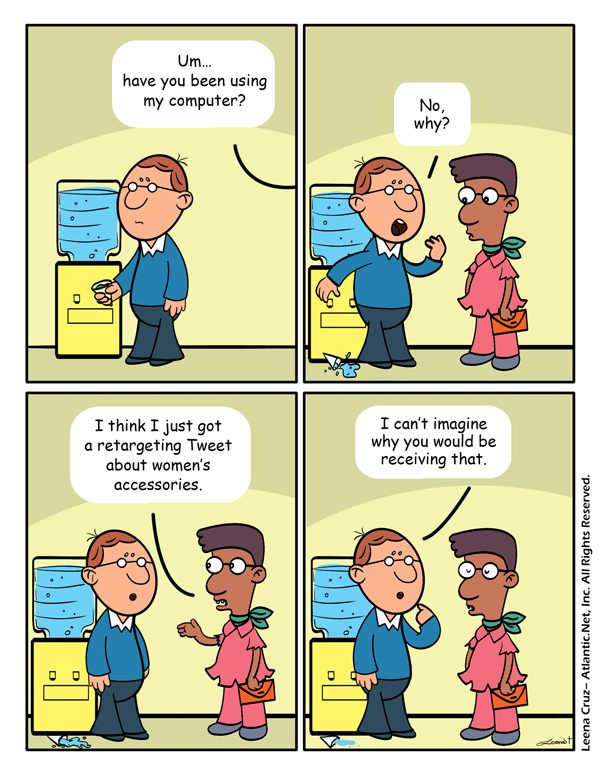Best Retargeting Strategies & the Twitter Opportunity

By Moazzam Adnan of VPS & Cloud Hosting Provider Atlantic.Net
The "Rule of 7" is one of the most prominent concepts in marketing. The basic idea is that to convert a new customer, you have to express your marketing message to them (in advertising or whatever other format) at least seven times. In the past, various marketing means - such as billboards, mailers, TV and radio ads and press - delivered the message broadly and repetitively. Retargeting allows a similar effect online.
Retargeting makes it possible to apply the Rule of 7 in a way never before possible. It allows businesses to continue marketing to potential customers long after they have left the company's website. A retargeting campaign gets you in front of your customers multiple times, often very quickly. It's a directed and fast-paced approach to the old model of using various forms of marketing media.
Because retargeting has proven so successful and become popular with a wide range of businesses, it's being expanded to encompass social media. Facebook recently added retargeting capabilities, and Twitter has followed suit.
To be clear (since this is sometimes a point of confusion), retargeting is not about acquisition. It's about follow-up. First a user comes to your website, and then you retarget them through display ads and social media channels.
A few retargeting strategies
Michael Briggs, president of the marketing agency Website Publicity, discussed several basic ways to improve your retargeting efforts. Here is a brief summary of his advice (which he believes will be of additional importance as time goes on and retargeting rates start increasing):
Ingenuity - Your potential customers will grow weary of seeing the same ad over and over again. If you want to achieve better results and avoid irritating users, try a variety of ads with each retargeting group.
In order to do that, you'll need a number of cookies that get passed to the user at the same time. When a cookie expires, your ad can then switch to a different one. If one message is uninteresting to the person, another ad might be more intriguing; either way, you aren't inundating anyone with the same advertisement.
You may also see instances in which a specific ad is not leading to sales. Change that ad. You could generate a cookie tied to a completely reworked marketing angle, or try slight revisions, such as changing the image you use in the ad.
Broad populations - The most obvious group to retarget is people who almost completed a purchase and then left your site. However, there is another group that you definitely do not want to ignore: those who did buy. You want a different campaign for those users, but retargeting can make it more likely that they become loyal rather than forgetting about you. However, that doesn't mean approaching them right away.
This process is similar to diversifying for a single group: set up two cookies, one that lasts for maybe two months and one that lasts for four. Don't start retargeting until the second cookie is active. Timing is everything, so consider when your customer might need your product or service again.
Credit where credit is due - You don't want to excessively give credit to a retargeting campaign, or you will misunderstand how effective it truly was: some customers may have come back on their own, without noticing the ads.
To test your campaigns, divide your visitors of each specific type (e.g., those who bought and those who didn't) into two different categories. For example, focus specifically on abandoned cart visitors. Create two cookies, one each to expire in a week and two weeks. Retarget to one category but not the other while the first cookie is active, then to both when the second cookie is active.
You are essentially trying to see how many of those people are coming back on their own, so you don't waste any money. You also don't want to unnecessarily risk irritating users who were going to return to your site anyway, so you want to make sure that your immediate retargeting efforts are effective.
Twitter Retargeting - Tailored Audiences
Ten different services - Adara, AdRoll, BlueKai, Chango, DataXu, Dstillery, Lotame, Quantcast, ValueClick, and [x+1] - now offer programs (which seem to largely be in beta form currently) to incorporate Twitter into your retargeting efforts. Reports indicate that Twitter started testing retargeting in July; so it's been tested for five months, and the implications for advertising are profound. It's been possible up until now, through Twitter, to specify parameters such as nation or age, but search engine data and website behavior makes the possibilities much more sophisticated.
Combining the big data available through a social platform with the big data obtained by retargeting services to enable individualized advertising on Twitter is an incredible opportunity. Just remember the Rule of 7, and strategize your efforts with creativity, diversity, and testing so that your campaigns are successful.










